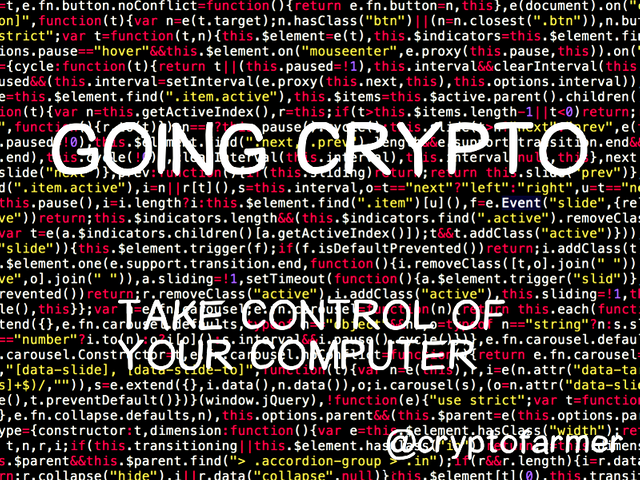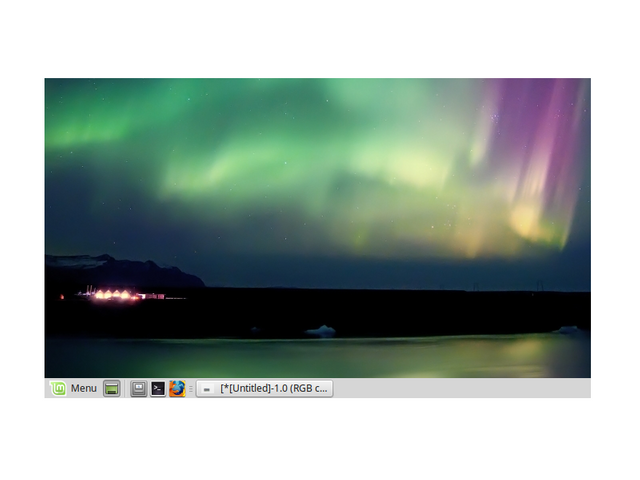GOING CRYPTO – Taking control of my computer with a Linux operating system

It all began several months ago, when my laptop suddenly warned me that it was about to shut down and install an update. It turned out that my computer was updating its operating system, from Windows 7 to Windows 10. As I said, that was the first time I experience the feeling of being completely, irrimediably, hopelessly, not in control of what was going on inside my PC. Using Windows 10 in the following days, this feeling just got worse.
First, I found on my PC a whole bunch of programs I was not interested to. Second, in a try of making the computer experience closer to the smartphone experience, the new version of Windows made control over one own PC even more complicated. Third, how came that Windows, an operating system that I was used to pay, became suddenly free? As I was not paying for a product I usually had to pay, I got concerned about becoming a product myself. How could I control my privacy in the midst of all those shiny “apps”?
So I took a decision: I would have left Windows for Linux and test whether this operating system worked better for me. I first decided to install it on a netbook (do you remember that product that tablet made obsolete?) I was not using since several years. I found a video on Youtube on how to Revive your netbook with Linux Mint and it felt like it was the good choice for me. I didn’t really bother on selecting a particular distribution of Linux: Linux Mint was described as simple and powerful, perfect for everyday work – just what I was looking for.
I must confess: I was pretty scared before installing a new operating system and some of my readers may be scared as well. Be assured: when coming to computers, I am definitely a layman. I started improving my understanding only because I got increasingly involved in crypto-currencies. But if I could install Linux Mint, with my average skills, you could do it too. What matters really is taking enough peaceful time for learning.
Short guide for installing Linux Mint
If you are interested in Linux Mint I would recommend you to watch the video I mentioned above and to visit directly the Linux Mint Homepage. You can currently choose to download two different types of desktop: Cinnamon and MATE. I chose the MATE and I like it.
After you choose your edition, go to the Documentation page. Download the user guide of your edition and read it with no hurry. You will find all the information on how to install and use it.
To me, a layman as I said, everything was brand new. From torrenting an Operating System (1,7 GB) to create a bootable flash disk.
I also had to find on the internet the user manual of my computer: here I learned which key should be pressed (F2) during reboot to access the BIOS environment where I had to set as a booting priority the USB above the hard disk (I hope you don’t get scared at this point).
By the way, it took me many hours to install it and several attempts (I guess around 20) before the computer booted the new operating system from the USB flash disk.
First impressions of Linux Mint
Just as I began with the installation of Linux Mint, I was given the choice to encrypt the hard disk. This is definitely a good choice if you are GOING CRYPTO. It’s not just a password the computer ask you when you turn it on. It is indeed a password that the computer asks you at the very beginning of reboot that decrypts all the hard disk. This felt like a good thing: if anyone would take my computer he/she would not be able to access to any information on it.
Then, I started exploring the operating system. As a first impression I felt like I had found what I was looking for: a simple, clean interface – perfect for a person like me who mostly uses a browser and a text and picture editor.
One of the icon that mostly caught my attention was that of the Terminal’s. This is the tool that you can use to directly command your computer, without the use of any graphical interface (that window that looks like a black page).

It’s very noticeable, between the Menu's and the browser’s icons (Firefox). As if browsing on the internet had the same importance of using the Terminal. This is how the User Guide describe this tool:
If you’re used to Microsoft Windows you may think that this is old hat, because in Windows the command line hasn't progressed much further than the “DOS prompt” and is hidden away in an accessories menu. One of the ways in which Linux systems differ from Windows systems is that the terminal is quite important in Linux, as it is often used as a way of getting more direct control over one's computer. […] Remember how you didn’t like certain things when you were a kid and how you couldn’t do without them now? Terminal is one of these things. In a few weeks, you’ll be completely addicted to it. You'll begin to feel in complete control of your computer.
A community I trust more than a corporation
Reading the User Guide I learned about how different is to use proprietary softwares in comparison of open-source.
In a very real sense, when you ran that installer program, you gave up some of your control of your computer to a program written entirely by a complete stranger [...]
It's awfully difficult to sneak spyware into your program when you're letting everyone see what you've written! [...]
Because you are part of a large community of Linux users, all using the same repositories to obtain their software, if anything goes wrong you can be absolutely sure there will be a big fuss about it, and that the problem will be resolved quickly! In this way, software distribution in GNU/Linux distributions is very much based on trust, from the moment the original developer displays their source code for all to see, to the open discussion on the distribution's website.
Conclusion
Linux Mint took me several hours to install but is now giving me the impression of being more in control of my computer, in comparison to Windows. It’s like if the whole operating system was meant for people who use a computer instead of people who are used by a computer. And when I'll have to install a software on it, the community consensus, together with the openness of the source, will provide me a major level of trust that I'm putting in my machine just the programs I deliberately mean to.
This post has been ranked within the top 80 most undervalued posts in the first half of Jan 14. We estimate that this post is undervalued by $3.93 as compared to a scenario in which every voter had an equal say.
See the full rankings and details in The Daily Tribune: Jan 14 - Part I. You can also read about some of our methodology, data analysis and technical details in our initial post.
If you are the author and would prefer not to receive these comments, simply reply "Stop" to this comment.
A very persuasive piece, you deserve more upvotes :)
Thank you very much indeed!
Well written and a bigger issue (privacy) then most people realize, Upvote from me. Good Sir.
thank you - that's great!
Saluton ! Thanks for sharing. That was great !
Dankon!